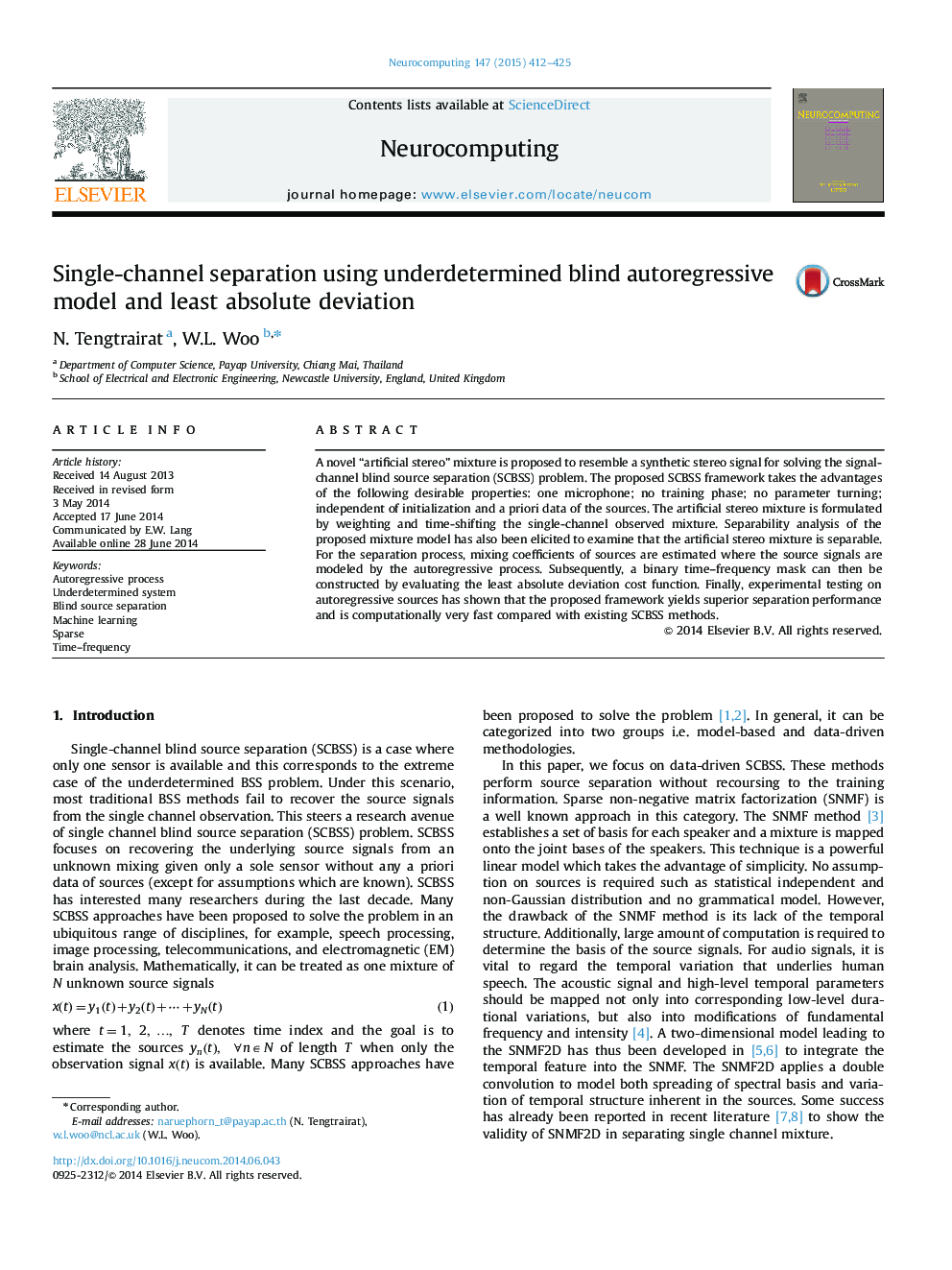| کد مقاله | کد نشریه | سال انتشار | مقاله انگلیسی | نسخه تمام متن |
|---|---|---|---|---|
| 409889 | 679101 | 2015 | 14 صفحه PDF | دانلود رایگان |

• Single channel mixing problem based on underdetermined binaural source separation method.
• The method is executed in “one-go” without the need of iterative optimization or training phase.
• It works very fast and does not require any parameter tuning and any a priori data for sources.
• It has low computational complexity and does not exploit high-order statistics.
• Independent of initialization and does not need predetermined structure on the sensors.
A novel “artificial stereo” mixture is proposed to resemble a synthetic stereo signal for solving the signal-channel blind source separation (SCBSS) problem. The proposed SCBSS framework takes the advantages of the following desirable properties: one microphone; no training phase; no parameter turning; independent of initialization and a priori data of the sources. The artificial stereo mixture is formulated by weighting and time-shifting the single-channel observed mixture. Separability analysis of the proposed mixture model has also been elicited to examine that the artificial stereo mixture is separable. For the separation process, mixing coefficients of sources are estimated where the source signals are modeled by the autoregressive process. Subsequently, a binary time–frequency mask can then be constructed by evaluating the least absolute deviation cost function. Finally, experimental testing on autoregressive sources has shown that the proposed framework yields superior separation performance and is computationally very fast compared with existing SCBSS methods.
Journal: Neurocomputing - Volume 147, 5 January 2015, Pages 412–425